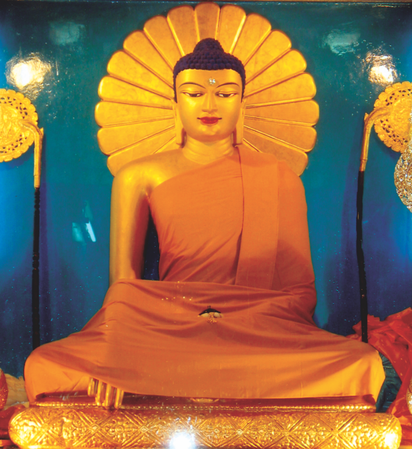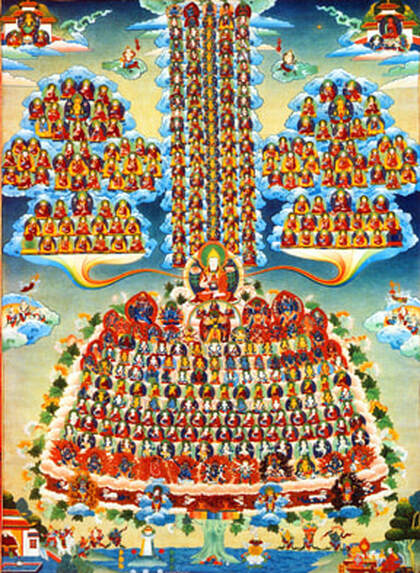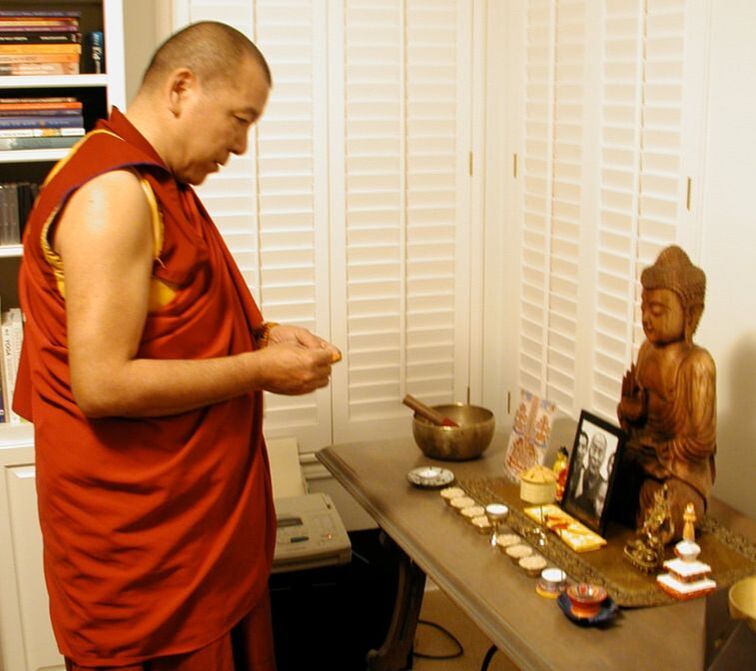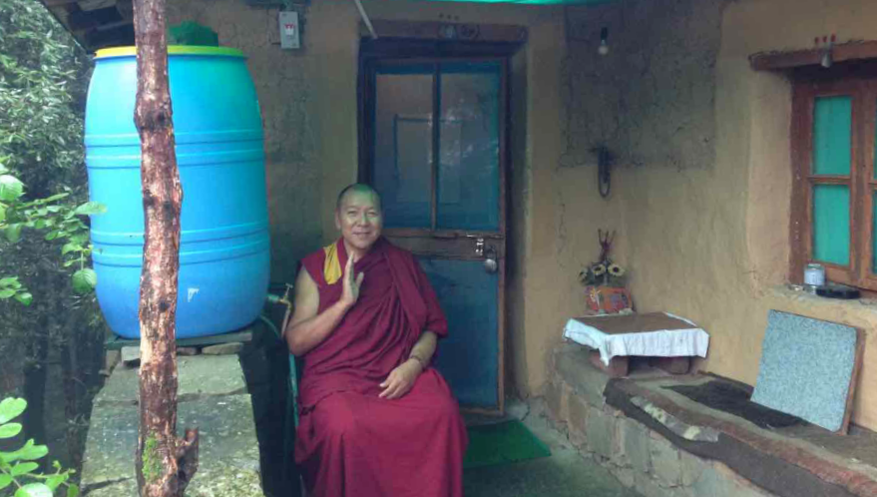|
30-Day Focus on the Mahayana Tibetan Buddhist Tradition • All Are Welcome
Calm Abiding Concentration Meditation Sunday 11:00 am class and discussion (four dates) March 20, 27, April 3, 10 Video Teachings by Geshe Drakpa Gelek (excepts) will be incorporated into each Sunday class. Daily Meditations March 16 through April 16, 2020 • 7:00 – 8:00 am Central |
| ||||||
|
Advance Preparation
Prior to the morning sessions it will be helpful to: • Contemplate your motivation for developing calm abiding. • Create a quiet place that you can use consistently over time. • Prepare a seat/cushion to sit cross-legged, or in a comfortable chair. • Select the object upon which you will establish concentration. Guidance on the selection >ABOUT SELECTING • Obtain an image of the object and arrange it in view of your seat. All Are Welcome The Sunday classes and 30-day morning meditations are being offered for those who wish to work toward developing calm abiding, single-pointed concentration. This series is meant to establish the habit of daily practice, essential to gaining calm abiding concentration. Sessions by Zoom: https://us02web.zoom.us/j/81120391583?pwd=RG1ZRFZOQzUwbUJhNTJUVW9oQzdwQT09 Meeting ID: 811 2039 1583 / Passcode: dharma2022 Join by Phone: 811-2039-1583 Passcode: 9297887035 |
In our lineage each session begins with the Six Preparatory Practices: > About:
Developing Calm Abiding in Stages
The great meditation masters have identified nine successive stages attained by a practitioner as they strive to attain calm abiding concentration: placing the mind, continual placement, repeated placement, close placement, taming, pacifying, thoroughly pacifying, making single-pointed, and placement in equipoise. > About developing the Nine stages | > Related Chart
To be endowed with calm abiding, the mind must have the ability to hold fast to one object for as long as one wishes—but this alone is not enough. The mind must be clear. This clarity should be intense, alert, and sharp. We will begin with the first stage, which is about getting the object to appear clearly in your mind. This typically can be difficult to establish, and will take some time over many sessions.
BEGIN SESSION... with eyes open, gazing at the chosen object of observation. Look at it long enough so it can appear to your mind internally with (partially) closed eyes. Imagine the object as luminous, about thumb size, at eye brow level, the distance of about four feet in front of you. Clearly placing the object in your mind’s eye it is the first of the nine successive stages.
Obstacles and Antidotes >More
As one works to develop calm abiding concentration, two main obstacles will arise: laxity and excitement. Excitement prevent stability and the object can not be sustained. Laxity dulls the clarity and intensity of the object and leads to a sinking, sleepy mind.
The power of mindfulness, watching the mind, is used to adjust the mind when these two faults arise. Excitement can be overcome by imagining that the object is quite heavy, lowering the chin somewhat, decreasing the luminosity, and recollecting the emptiness of the distracting thoughts. Laxity can be overcome by small adjustments such as increasing the luminosity of the object, raising one’s chin up a bit, recalling the importance of this effort, and avoiding heavy meals.
End Session with Dedication
Due to the merits of these virtuous actions, may we quickly attain the state of a guru-buddha and lead all sentient beings, without exception, into that enlightened state.
May the precious bodhi mind not yet born arise and grow; and may that born have no decline but increase forever more.
In all my lives, never separated from perfect spiritual masters, may I enjoy the magnificent Dharma. Completing all the qualities of the stages and the paths may I attain Buddhahood for the sake of all sentient beings.
- Clean the room and arrange altar with representations of Buddha’s body, speech, and mind.
- Obtain offerings and place them on the altar before the Buddha.
- 3a. Take the 8-point posture: Back straight like an arrow. Legs crossed in vajra or bodhisattva posture. Hands palms-up left-over-right, thumbs touching. Chin tucked in slightly. Eyes gazing down past your nose. Tongue held against the upper palate. Lips slightly apart.
3b. Do the Nine-cycle breaths. 3c. Visualize Buddha and take Refuge, generate Bodhichitta:
I go for refuge until I am enlightened to the Guru, the Buddha, the Dharma and the Sangha. Through the positive potential I create by practicing generosity and the other far-reaching attitudes may I attain Buddhahood for the sake of all sentient beings. (3x) - Visualize an expanded Merit Field of positive potential: Buddha, Lineage, Teachers
- Engage in the seven-limb prayer and offer a mandala to the Field of Merit
Reverently I prostrate with my body speech and mind, And present clouds of every type of offering, actual and mentally transformed. I confess all my negative actions accumulated since beginingless time, And rejoice in the merits of all holy and ordinary beings. Please remain until samsara ends, And turn the wheel of Dharma for sentient beings. I dedicate the merit created to the great enlightenment. - Request Inspiration from your guru(s): All you holy enlightened beings, please inspire us, so that we may abandon all deluded minds and easily generate all flawless states of mind, beginning with respecting the spiritual mentor and ending with knowing the reality of selflessness. Please bless us to quell all inner and outer obstacles.
Developing Calm Abiding in Stages
The great meditation masters have identified nine successive stages attained by a practitioner as they strive to attain calm abiding concentration: placing the mind, continual placement, repeated placement, close placement, taming, pacifying, thoroughly pacifying, making single-pointed, and placement in equipoise. > About developing the Nine stages | > Related Chart
To be endowed with calm abiding, the mind must have the ability to hold fast to one object for as long as one wishes—but this alone is not enough. The mind must be clear. This clarity should be intense, alert, and sharp. We will begin with the first stage, which is about getting the object to appear clearly in your mind. This typically can be difficult to establish, and will take some time over many sessions.
BEGIN SESSION... with eyes open, gazing at the chosen object of observation. Look at it long enough so it can appear to your mind internally with (partially) closed eyes. Imagine the object as luminous, about thumb size, at eye brow level, the distance of about four feet in front of you. Clearly placing the object in your mind’s eye it is the first of the nine successive stages.
Obstacles and Antidotes >More
As one works to develop calm abiding concentration, two main obstacles will arise: laxity and excitement. Excitement prevent stability and the object can not be sustained. Laxity dulls the clarity and intensity of the object and leads to a sinking, sleepy mind.
The power of mindfulness, watching the mind, is used to adjust the mind when these two faults arise. Excitement can be overcome by imagining that the object is quite heavy, lowering the chin somewhat, decreasing the luminosity, and recollecting the emptiness of the distracting thoughts. Laxity can be overcome by small adjustments such as increasing the luminosity of the object, raising one’s chin up a bit, recalling the importance of this effort, and avoiding heavy meals.
End Session with Dedication
Due to the merits of these virtuous actions, may we quickly attain the state of a guru-buddha and lead all sentient beings, without exception, into that enlightened state.
May the precious bodhi mind not yet born arise and grow; and may that born have no decline but increase forever more.
In all my lives, never separated from perfect spiritual masters, may I enjoy the magnificent Dharma. Completing all the qualities of the stages and the paths may I attain Buddhahood for the sake of all sentient beings.
Gelug Merit Field |
Setting Up an AltarAbove: Geshe Drakpa arranges an altar for a student
Essential elements of a practice altar or shrine include representations of Buddha's enlightened body, speech, and mind. Individuals can and do create a vast array of altars from very simple to extremely elaborate. Thubten Chodron, a teacher in our Gelug traditioon, covers this topic in great detail https://thubtenchodron.org/2013/01/buddhist-shrine/ Below: Geshe Drakpa with San Antonio students |



